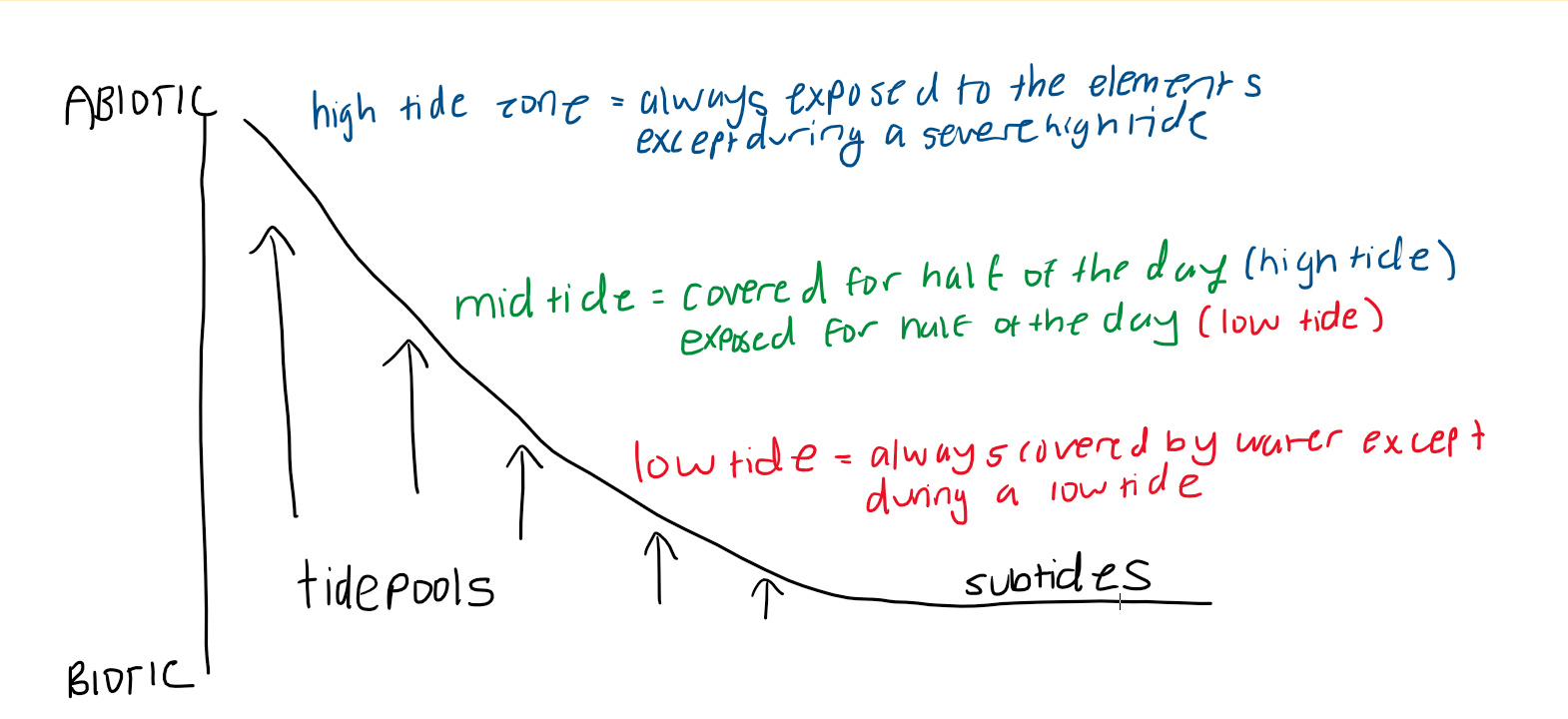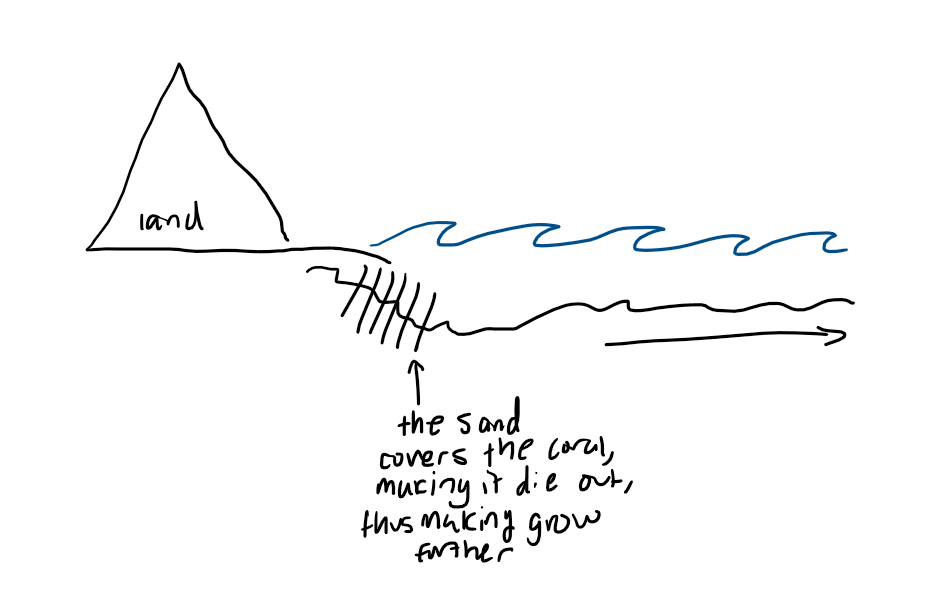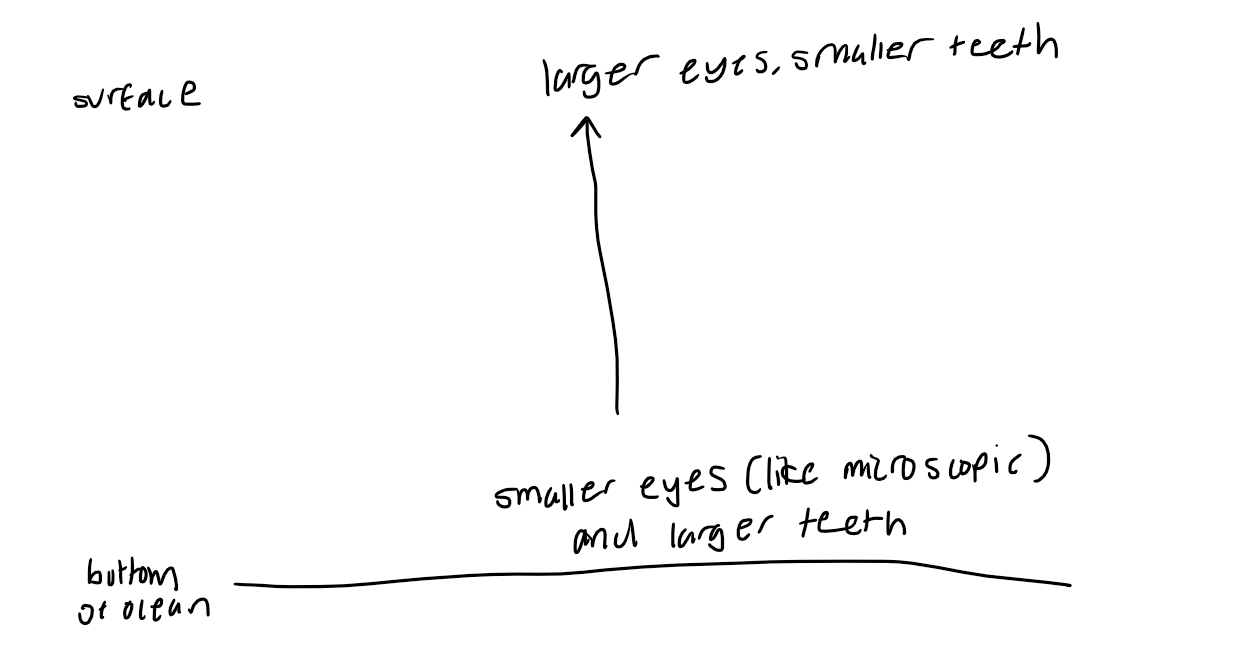Intertidal Communities/Coral Reefs
INTERTIDAL COMMUNITIES
Intertidal: “between communities”
Between high tides and low tides

Rocky intertidal communities are made up of zonations
Factors
Temperature
Fluctuates throughout the day
affects it if water is present
Organisms that live here vary greatly
Nonmobile
Nonmobile organisms cool off using:
Lighter colors
Radiator effect = Increased surface area on their bodies
Mobile → can move to cooler pools or shaded areas if it’s too hot
Salinity
Most organisms living here are euryhaline
Mobile → can move into any pool they desire
Nonmobile organisms use an operculum or salt glands
- Operculum: Covering that’s used to close their bodies from the external environment
Wave shock
Mobile organisms can move to the non-wave exposed side of a rock
Nonmobile:
Those that have shells evolved to have thicker shells -- “adhesives:”
Lowering their profile: making themselves shorter
- Higher-profile organisms get affected more by the waves
Gathering in numbers = increasing the surface area so that the wave goes over the entire group, decreasing the force of the wave
CORAL REEFS
Building a Reef PT I
- Coral reefs are a very important ecosystem
- Before the coral arrives, a foundation of calcium needs to be established
- Coraline red algae dies, then releases calcium
- The calcium mixed with sand thus creates the foundation
- Hermatypic corals: “reef-building corals”
- Mutualistic relationship with zooxanthellae
- Zooxanthellae = photosynthetic organism that provides energy to make more calcium that helps build the reef
- Because they can photosynthesize, they tend to live in photic zones
- Ahermatypic corals: “non-reef building corals”
- Lives in deep water
Building a Reef PT II
Planula = free-floating microscopic Cnidarians
- This becomes a polyp = a single Cnidarian organism that has now settled on a hard substrate
- The polyp clones itself/makes multiple copies, which is how the structure of a coral is formed
- Corals are basically just copies of the first polyp that landed there
Feeding methods:
- Nematocysts used to get food
- Mucus nets = release mucus from their openings to trap organisms in their web, and then suck the mucus back in
- Mesenterial filaments = strings that come off individual members to reel in food, think of them as “long fishing nets”
Types of coral reefs
Fringing Reef
- Close to the shore (fringing = edge)
- The youngest types of reef
Barrier Reef
- Further away from the coast
- Very large
Atoll
- The oldest reef type
- Also arguably the prettiest-looking reef

Patch reefs
- small, isolated reefs that grow up from the open bottom of the island platform or continental shelf
Impacts to Reefs
- Very sensitive to sedimentation (making the water turbid)
- Increase in UV exposure results in coral bleaching
- Crown of thorn sea star:
- Can eat large areas of coral reefs
- Tritons are the only ones that can consume them because the sea star is poisonous
- Currently being overfished
Deep Ocean
- Very cold
- Very pressurized
- Very dark
- Primary production is basically nonexistent
Feeding Methods
Marine show = small food particles that rain down from above
- Most common
Whale fall
- Called whale fall because whales that die/fall to the deep ocean is basically a mini buffet, but the term isn’t just for whales
- Whale falls are a larger form of meal that comes once in a while and can last the other organisms well over a year
- Most marine organisms adapt to pressure
- Dorso-ventrally compressed organisms
- Reduced skeletons = thin bones that make up their skeleton
- Some have large eyes, but typically it looks like this:

Unique Features
- Most can produce bioluminescence: the use of chemical reactions in body to make light
- Some combine both lure and bioluminescence
- Sometimes, they can be used for communication
- Ex) Angler fish
Parasites
- Ectoparasites = parasites found on the external body (fins, gills, body)
- Endoparasites = internal parasites (muscles, guts, blood)
- Mesoparasites = internal and external parasites (reproductive structures)
Hosts
- Transport host = only used to move from one organism to another
- Intermediate host = where parasites tend to grow BUT not become reproductively mature
- Final host = the host where parasites become reproductively mature